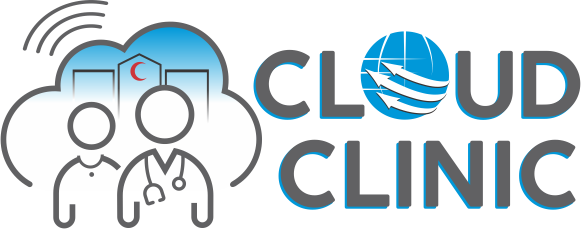Telemedicine has revolutionized the healthcare landscape, providing patients with unprecedented access to medical care from the comfort of their homes. This innovative approach has become a lifeline for many, especially in times of crisis like the COVID-19 pandemic. Telemedicine’s ability to bridge the gap between patients and healthcare providers has proven invaluable. Here, we explore the top 10 conditions treated effectively through telemedicine, highlighting the challenges faced by patients and how their lives are changing for the better.
- Mental Health Disorders
Mental health conditions such as anxiety, depression, and PTSD have found a new ally in telemedicine. Virtual therapy sessions and online consultations with psychiatrists and psychologists make it easier for patients to seek help without the stigma associated with visiting a clinic. For many, the convenience and privacy of telemedicine have made mental health care more accessible, encouraging more people to seek the support they need.
Moreover, telemedicine has opened up mental health services to individuals in rural or underserved areas, who might otherwise lack access to mental health professionals. This accessibility is crucial, as timely intervention can prevent the escalation of symptoms and improve overall outcomes.
- Diabetes Management
Diabetes requires constant monitoring and regular consultations. Telemedicine enables diabetics to have their blood sugar levels, diet, and medication adjustments monitored remotely. Continuous glucose monitors and telehealth platforms allow real-time data sharing with healthcare providers, ensuring prompt interventions and personalized care plans.
Patients benefit from the ability to have frequent check-ins without the need to travel, which is especially beneficial for those with mobility issues or those living far from healthcare facilities. This regular monitoring helps in the early detection of potential complications, improving long-term health outcomes. Additionally, educational resources provided through telemedicine platforms empower patients to manage their condition more effectively, promoting better adherence to treatment plans.
- Hypertension
High blood pressure, or hypertension, is another condition well-managed through telemedicine. Patients can regularly check their blood pressure at home and share the results with their doctors via telehealth platforms. This continuous monitoring helps in timely adjustments to medication and lifestyle recommendations, reducing the risk of severe complications such as heart disease and stroke.
Telemedicine also allows for the integration of health data from wearable devices, providing a comprehensive view of the patient’s health. This data can help doctors identify trends and triggers, enabling more precise management of hypertension.
- Dermatological Issues
Skin conditions such as eczema, psoriasis, and acne are ideally suited for telemedicine. Patients can upload photos of their skin issues, and dermatologists can assess and prescribe treatments without the need for an in-person visit. This approach is particularly beneficial for those living in remote areas with limited access to dermatologists.
Teledermatology has significantly reduced waiting times for consultations, allowing patients to receive timely advice and treatment. For chronic skin conditions, regular follow-ups can be conducted virtually, ensuring continuous care and monitoring.
- Respiratory Infections
Conditions like the common cold, flu, and even COVID-19 can be managed through telemedicine. Virtual consultations allow doctors to evaluate symptoms, prescribe medications, and advise on home care or the need for further testing. This minimizes the risk of spreading infections in healthcare facilities and provides timely care for patients.
Patients can receive guidance on managing symptoms at home and understanding when to seek further medical attention. This approach helps in managing healthcare resources effectively, ensuring that in-person visits are reserved for those who truly need them.
- Chronic Pain Management
Patients suffering from chronic pain conditions such as arthritis or fibromyalgia can benefit from telemedicine. Regular virtual consultations with pain management specialists help in adjusting pain relief strategies and therapies. Additionally, telehealth can facilitate physical therapy sessions and pain management exercises guided by professionals.
Telemedicine offers a holistic approach to pain management, incorporating various treatment modalities such as medication adjustments, physical therapy, and psychological support. Patients can access a multidisciplinary team without the need to visit multiple locations, streamlining their care.
- Gastrointestinal Disorders
Telemedicine is effective for managing gastrointestinal issues like irritable bowel syndrome (IBS) and acid reflux. Patients can discuss symptoms and treatment options with gastroenterologists via video calls. This ensures continuous care and monitoring, helping to manage and alleviate symptoms effectively.
For patients with chronic digestive issues, regular follow-ups can be conducted conveniently, ensuring that their treatment plans are optimized and any changes in symptoms are promptly addressed.
- Allergies
Allergies, whether seasonal or chronic, can be efficiently managed through telemedicine. Patients can consult with allergists to discuss symptoms, treatment plans, and preventive measures. This is especially useful during peak allergy seasons when in-person appointments are hard to secure.
Telemedicine allows for personalized allergy management, with doctors providing tailored advice based on patients’ specific triggers and symptoms. This personalized care helps in minimizing allergic reactions and improving patients’ overall well-being.
- Pediatric Care
Telemedicine is a boon for pediatric care, allowing parents to consult pediatricians about their children’s health concerns without leaving home. From common childhood illnesses to developmental concerns, virtual visits ensure timely advice and treatment, reducing the stress and inconvenience of taking young children to clinics.
Parents can access a wide range of pediatric services through telemedicine, including consultations with specialists, developmental assessments, and follow-up appointments. This accessibility is particularly valuable for parents with multiple children or those living in areas with limited pediatric healthcare options.
- Follow-Up Appointments
For many conditions, follow-up appointments are crucial yet burdensome. Telemedicine simplifies this process by enabling patients to have their follow-up consultations online. Whether it’s post-surgical follow-ups or chronic condition monitoring, telehealth ensures continuous and convenient care.
Telemedicine reduces the need for patients to take time off work or arrange transportation for follow-up visits, making it easier for them to adhere to their care plans. This convenience leads to better health outcomes, as patients are more likely to attend follow-up appointments and stay engaged with their healthcare.
A Glimpse into the Future
The future of telemedicine looks promising. As technology continues to evolve, we can expect even more sophisticated remote diagnostic tools and AI-driven health assessments. Integration with wearable devices will provide real-time health data, enabling proactive management of health conditions. Telemedicine will likely become a staple in healthcare, offering a hybrid model of care that combines the best of in-person and virtual consultations.
The potential for telemedicine to transform healthcare is immense. It holds the promise of making high-quality care accessible to all, regardless of geographic location or socioeconomic status. By addressing current challenges and leveraging technological advancements, telemedicine can bridge gaps in healthcare delivery and improve health outcomes for millions of people worldwide.







